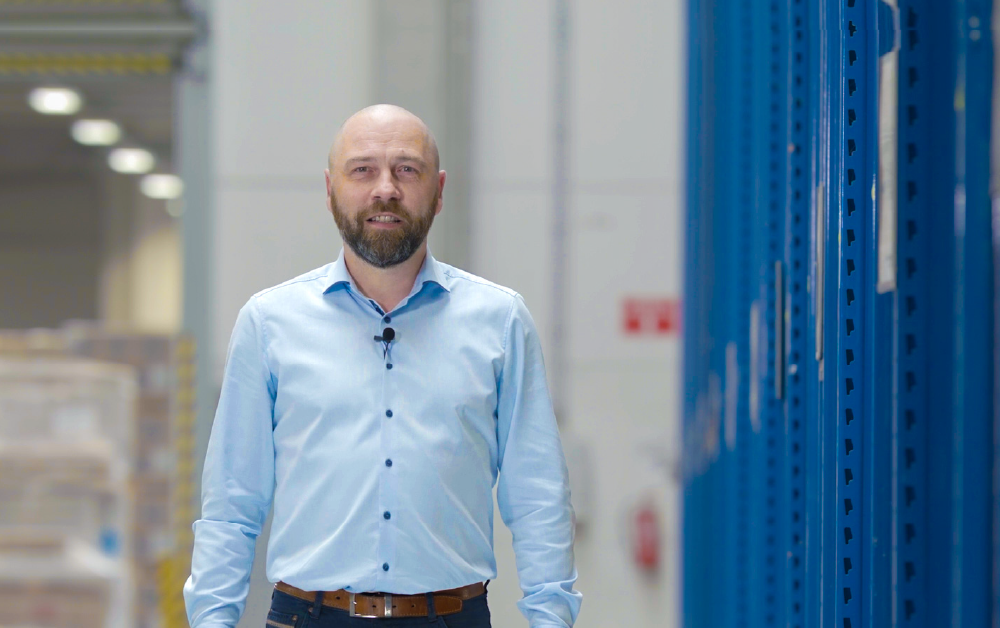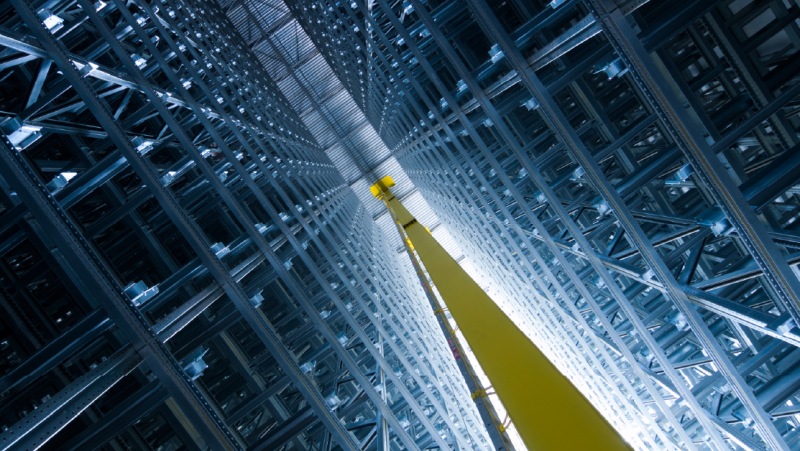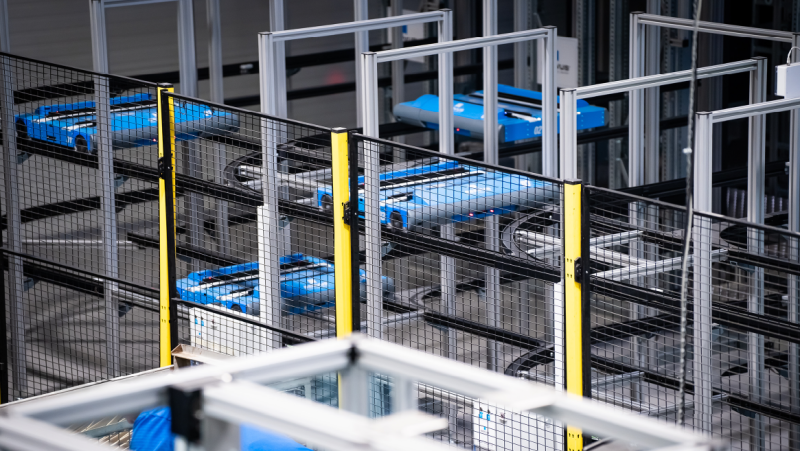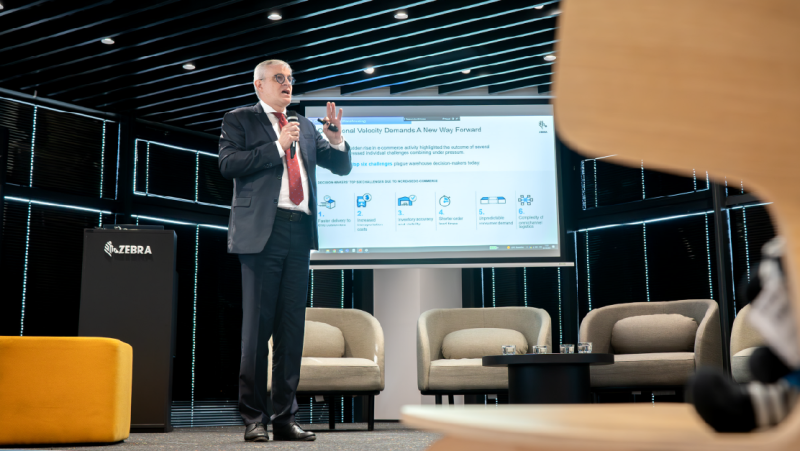An interview with LASSELSBERGER's Head of Logistics on a successful introduction of changes
- Automation
- Interview
RAKO is a brand with over 140 years of tradition. It’s also a member of the LASSELSBERGER group – one of the world’s largest producers of ceramic tiles. I visited the RAKO distribution centre in Chlumčany and spoke with Pavel Vokáč, Head of Logistics at the Czech branch, about how these products’ logistics has some surprising specifics.
As I was preparing the shared case study, my colleagues from Aimtec alerted me with a smile that logistics at “the tile guys” is quite the challenge and far more complex than you’d think. What are the biggest specifics?
Well, there are several. We work with a variety of formats and batch sizes for goods, as well as product quality levels. We have to distinguish them thoroughly, because minor quality deviations – for example in product shade – are unavoidable within a comparison of several lots. One thing also related to this is that we can’t frequently change the products made on our manufacturing line, and thus we work with a large inventory stock, specifically for 4–5 months. And another specific is the weight of the products and packaging – you can probably imagine that a pallet stacked with tiles has a bit of weight. And that weight is about a tonne. And we have 110,000 pallets like that here in the Chlumčany distribution centre alone.
You’ve been in charge of RAKO’s logistics for over fifteen years. How has your work transformed over this time? What were the biggest milestones?
The shift within intralogistics over the years has of course been enormous. It’s all about digitalisation. We’ve managed to proceed systematically – something new every 2–4 years. Looking back, I see several important milestones: opening the new distribution centre, various sub-projects that improved certain processes.
„The transition of our logistics to the same control system as the rest of the firm, SAP, was certainly crucial. This system is what enables all the rest of our development – including automation, a very hot topic for us today.“
Pavel Vokáč, Head of Logistics, LASSELSBERGER
Automation is definitely making waves in logistics. What is your main reason for deploying these kinds of solutions?
We’re learning to use our human labour more effectively and support it with automation. In short there’s a lack of people on the market, and it’s not getting better. In this time of labour-market crisis, we’re reaping the benefits that automation and digitalisation bring us. But the main reason is our emphasis on precision and speed. Our systematic work on optimising our processes is paying off. Thanks to this, we have fewer customer complaints and shorter response times when handling them.
Could you give an example of an automation success?
Sure, it’s specifically the flow of goods in Chlumčany, which is interconnected from production to shipping. We’ve introduced the marking of packages with QR codes bearing information from the line about lots, quality and production shifts. The packages are assembled into pallets, which are registered in the system; it then evaluates, based on their contents, how the pallet will be processed from there. The system manages the pallet’s current location, and the warehouse operators’ work is directed based on logistical parameters. A large portion of this process is automated – automatic detection of pallet contents, an automatic conveyor, semi-automated VNA trucks, readers and scanners. And it all works in a connected sequence of individual sub-steps, which are recorded and traceable.
Is there any process that’s especially challenging to digitalise?
Definitely the picking and put-away strategies. It’s very hard for us to estimate the production batch from a single product and lot. We can’t know in advance precisely how many products from a given lot will pass the quality inspection. This is truly specific to our kind of production, because we manufacture from a natural material, and there are certain faults we can only find at the end of the production process. It’s only once we’ve seen the output from production that we know how many products we will need to put away.
The digitalisation and automation projects you describe are all connected with a change to how people involved in these processes work. You’ve mentioned that these kinds of changes happen fairly often. What’s your recipe for ensuring they are introduced smoothly?
Multi-step introduction of changes has proven itself for us. That’s also because every adjustment has to be made without any interruption to warehouse and shipping operations. We strive to take only gradual steps unless absolutely necessary so that there’s no threat of paralysing our logistics. And that’s simultaneously the answer to ensuring our changes are all accepted. Our team gradually gets used to what’s new and adapts. Since we never change our whole logistics scheme overnight, we ensure any unclear points are gradually resolved. It’s truly a priority for us. Customers must not notice any issues.
Is there any experience, good or bad, you’d like to share with your logistics colleagues?
Yes, I’d note one connected precisely with roll-outs of changes – this is a really important topic. Logistics management has to take part in changes. It’s not enough to train people. You need to let them experience what the change means. Lead people through the process in the presence of management and team leaders. And that actually applies to the entire project. We never make changes from the drawing board. Whenever we’re improving something, colleagues from operations take part in the project. They verify that the change won't set us up for problems somewhere. And vice-versa.
If people from operations have a good idea, we always evaluate how it fits into our development vision. That’s probably the key thing. Always having an idea of where we’re headed. We also have a single long-term partner for digitalisation, Aimtec. Since they know us well, we’re faster and more effective in readying and deploying changes. We try to standardise solutions throughout our company, and collaboration with a single systems provider makes this significantly easier.
Share article
Top stories from logistics, production and IT.
Subscribe to Aimtec Insights
By registering, you agree to the processing of your personal data by Aimtec as described in the Privacy policy.
Get top stories and articles
from Logistics, Production and IT.
Subscribe to Aimtec Insights
By registering, you agree to the processing of your personal data by Aimtec as described in the Privacy policy.







